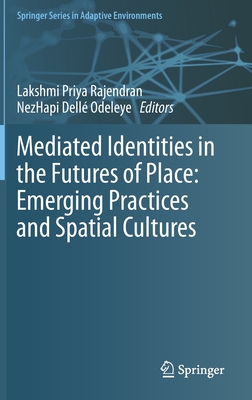The Fabric of Interface: Mobile Media, Design, and Gender (MIT Press)
暫譯: 介面的結構:行動媒體、設計與性別 (MIT Press)
Stephen Monteiro
- 出版商: MIT
- 出版日期: 2017-11-10
- 售價: $1,430
- 貴賓價: 9.5 折 $1,359
- 語言: 英文
- 頁數: 208
- 裝訂: Hardcover
- ISBN: 0262037009
- ISBN-13: 9780262037006
海外代購書籍(需單獨結帳)
商品描述
Tracing the genealogy of our physical interaction with mobile devices back to textile and needlecraft culture.
For many of our interactions with digital media, we do not sit at a keyboard but hold a mobile device in our hands. We turn and tilt and stroke and tap, and through these physical interactions with an object we make things: images, links, sites, networks. In The Fabric of Interface, Stephen Monteiro argues that our everyday digital practice has taken on traits common to textile and needlecraft culture. Our smart phones and tablets use some of the same skills -- manual dexterity, pattern making, and linking -- required by the handloom, the needlepoint hoop, and the lap-sized quilting frame. Monteiro goes on to argue that the capacity of textile metaphors to describe computing (weaving code, threaded discussions, zipped files, software patches, switch fabrics) represents deeper connections between digital communication and what has been called "homecraft" or "women's work."
Connecting networked media to practices that seem alien to media technologies, Monteiro identifies handicraft and textile techniques in the production of software and hardware, and cites the punched cards that were read by a loom's rods as a primitive form of computer memory; examines textual and visual discourses that position the digital image as a malleable fabric across its production, access, and use; compares the digital labor of liking, linking, and tagging to such earlier forms of collective production as quilting bees and piecework; and describes how the convergence of intimacy and handiwork at the screen interface, combined with needlecraft aesthetics, genders networked culture and activities in unexpected ways.
商品描述(中文翻譯)
追溯我們與行動裝置的物理互動的血統,回到紡織和針線工藝文化。
在我們與數位媒體的許多互動中,我們並不坐在鍵盤前,而是將行動裝置握在手中。我們轉動、傾斜、撫摸和輕觸,透過這些與物體的物理互動,我們創造出東西:圖像、連結、網站、網絡。在《介面的織物》中,Stephen Monteiro 主張我們日常的數位實踐已經具備了與紡織和針線工藝文化相似的特徵。我們的智慧型手機和平板電腦使用了一些相同的技能——手部靈巧、圖案製作和連結——這些技能是手工織布機、針點環和膝上大小的拼布框所需的。Monteiro 接著主張,紡織隱喻在描述計算(編織程式碼、串聯討論、壓縮檔案、軟體補丁、交換布線)方面的能力,代表了數位通信與被稱為「家庭工藝」或「女性工作」之間更深層的聯繫。
將網絡媒體與看似與媒體技術無關的實踐聯繫起來,Monteiro 在軟體和硬體的生產中識別出手工藝和紡織技術,並引用了被織布機的桿子讀取的穿孔卡片作為一種原始的計算機記憶形式;檢視將數位圖像定位為在其生產、訪問和使用過程中可塑的織物的文本和視覺話語;將數位勞動的喜歡、連結和標記與早期的集體生產形式如拼布聚會和分工進行比較;並描述了在螢幕介面上親密性和手工藝的融合,結合針線工藝美學,如何以意想不到的方式使網絡文化和活動性別化。














